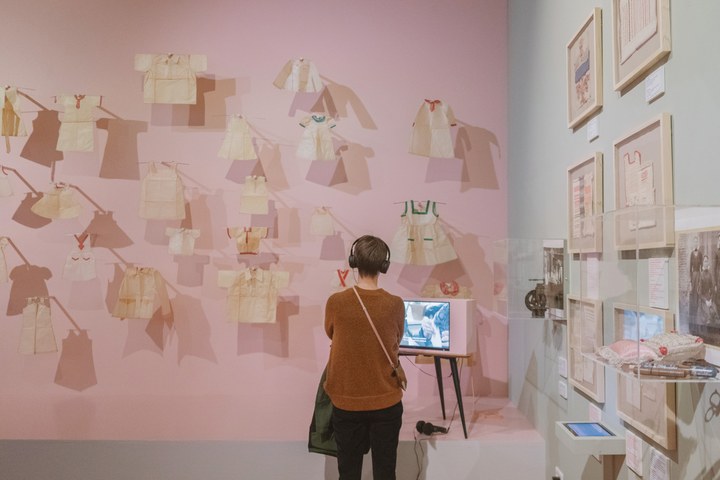- https://www.zeeuwsmuseum.nl/en/plan-your-visit/now-in-the-museum/exhibitions/afterlives_of_slavery
- Afterlives of Slavery
- 2024-05-25T00:00:00+02:00
- 2025-05-18T23:59:59+02:00
- Current legacies of slavery and colonialism
The exhibition Afterlives of Slavery opens soon at the Zeeuws Museum. It is more than 160 years since slavery was abolished in the Dutch colonies, but the racial inequalities built up over centuries have not disappeared on their own. While the relationship between slavery’s past and the present is unclear to many white Dutch people, for most Black Dutch people the links between slavery and contemporary inequality, racism and discrimination are painfully apparent. In this exhibition, we ask the following questions: what is our shared history of slavery? How do we deal with it today and how can we create a shared future? We pose these questions through objects, artworks and interviews with scholars and other experts.
The Zeeuws Museum has taken Afterlives of Slavery over from the Wereldmuseum. We are using this exhibition to investigate, together with experts and the public, how stories about Zeeland’s role in slavery and colonialism can be added to future versions of the exhibition This is Zeeland.
Cargo, Human Cargo and Return
Threads of the Netherlands’ History of Slavery
Zeeuws Museum and various locations in Zeeland
From 25 May to fall 2024
The opening of the exhibition coincides with the start of Zeeland’s edition of the textile art project Threads of the Netherlands’ History of Slavery. As part of workshops throughout Zeeland, members of the public will help to create a three-part tapestry. Everyone can participate.
The workshop in the Zeeuws Museum is part of Afterlives of Slavery. The creation of the tapestry can be followed in the Maritime Museum Zeeland in Vlissingen. When the tapestry is completed, it will tour the province.
The tapestry has been designed by artist Liesbeth Labeur. Its subject is the Atlantic triangular slave trade, a unique archive of which is preserved in the Zeeland Archives. In order to supplement this economic perspective with other viewpoints and stories, the artist has invited descendants of enslaved people to contribute to the design process.
The tapestry’s three parts focus on the three journeys that made up the Atlantic triangular slave trade: the ones that carried ‘Cargazoen’ (Cargo), ‘Armazoen’ (Human Cargo) and ‘Retouren’ (Return). ‘Cargazoen’ was the load commercial goods on the journey from Middelburg or Vlissingen to Africa, which were exchanged for enslaved people. On the ‘Armazoen’ leg of the journey, they were taken to the Caribbean, where they were forced to work without pay on various plantations. The load ‘Retouren’ included the products they produced and were shipped back to Zeeland.
Threads of the Netherlands’ History of Slavery is a nationwide initiative of Villa Maecenatis. In 2022, no fewer than 400 residents of Groningen contributed to making a similar tapestry.
In addition to the Zeeuws Museum, participating partners are the Zeeland Anti-Discrimination Office, Keti Koti Zeeland, the Maritime Museum Zeeland, the Zeeland Library and the Zeeland Archives, in association with Four Freedoms Throughout the Year.



